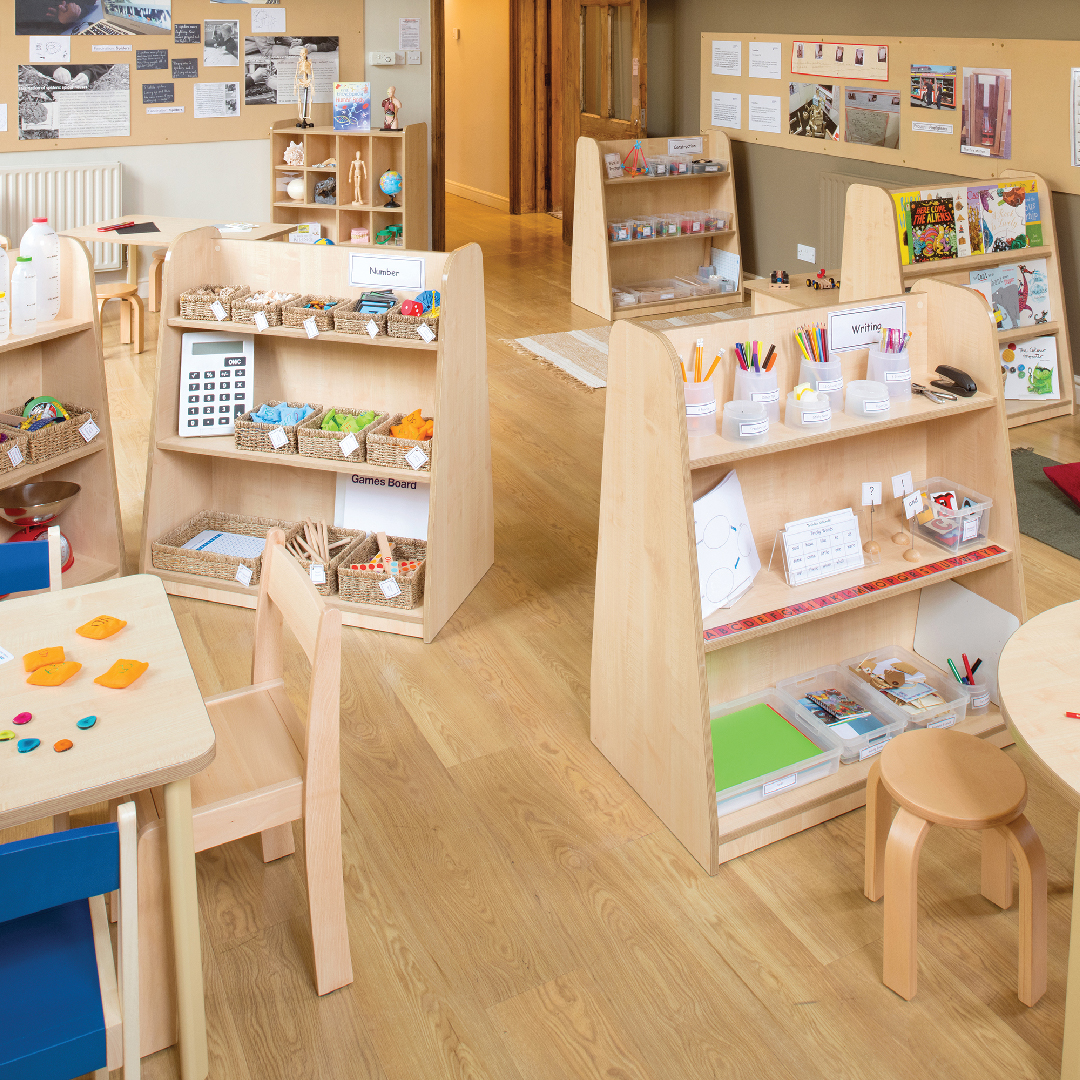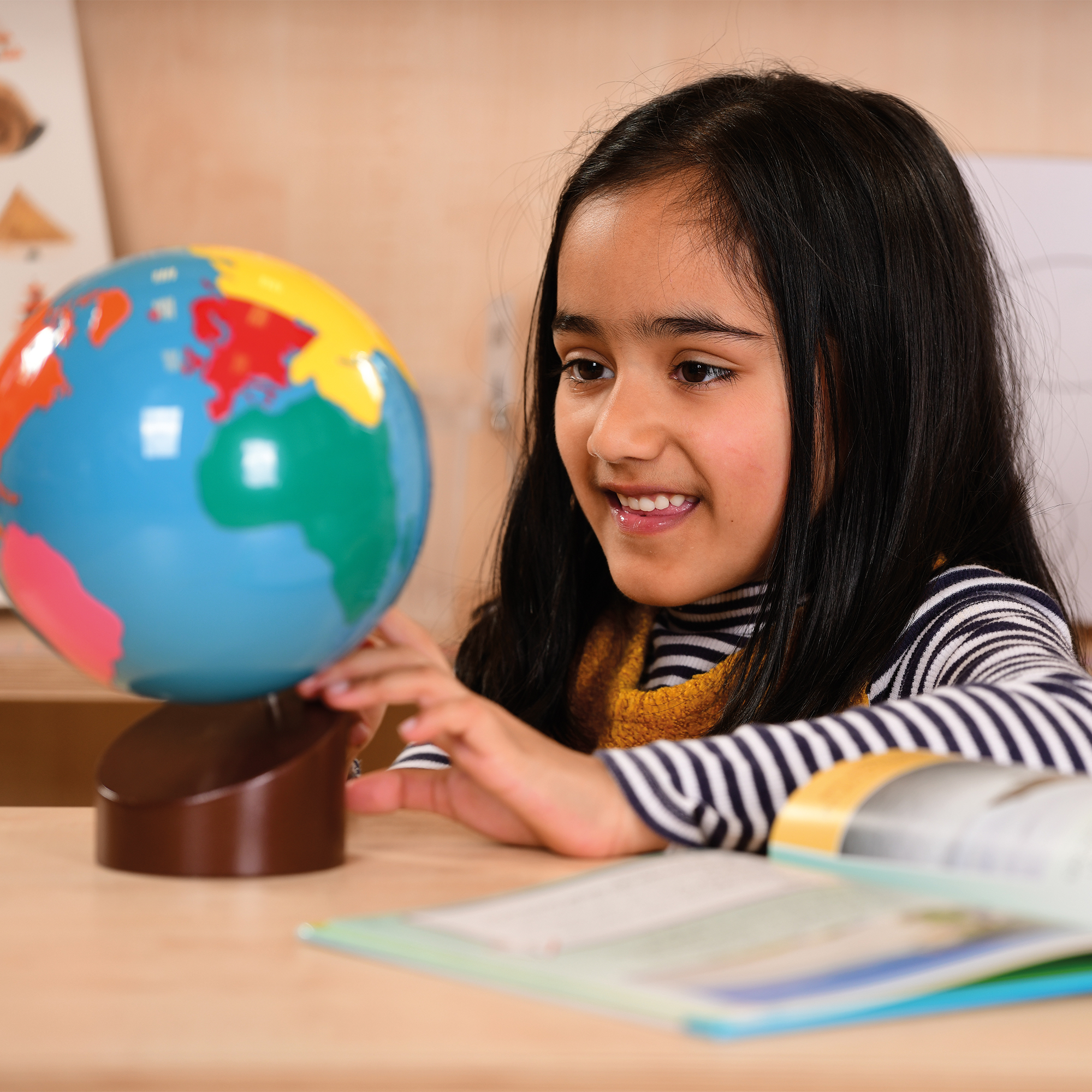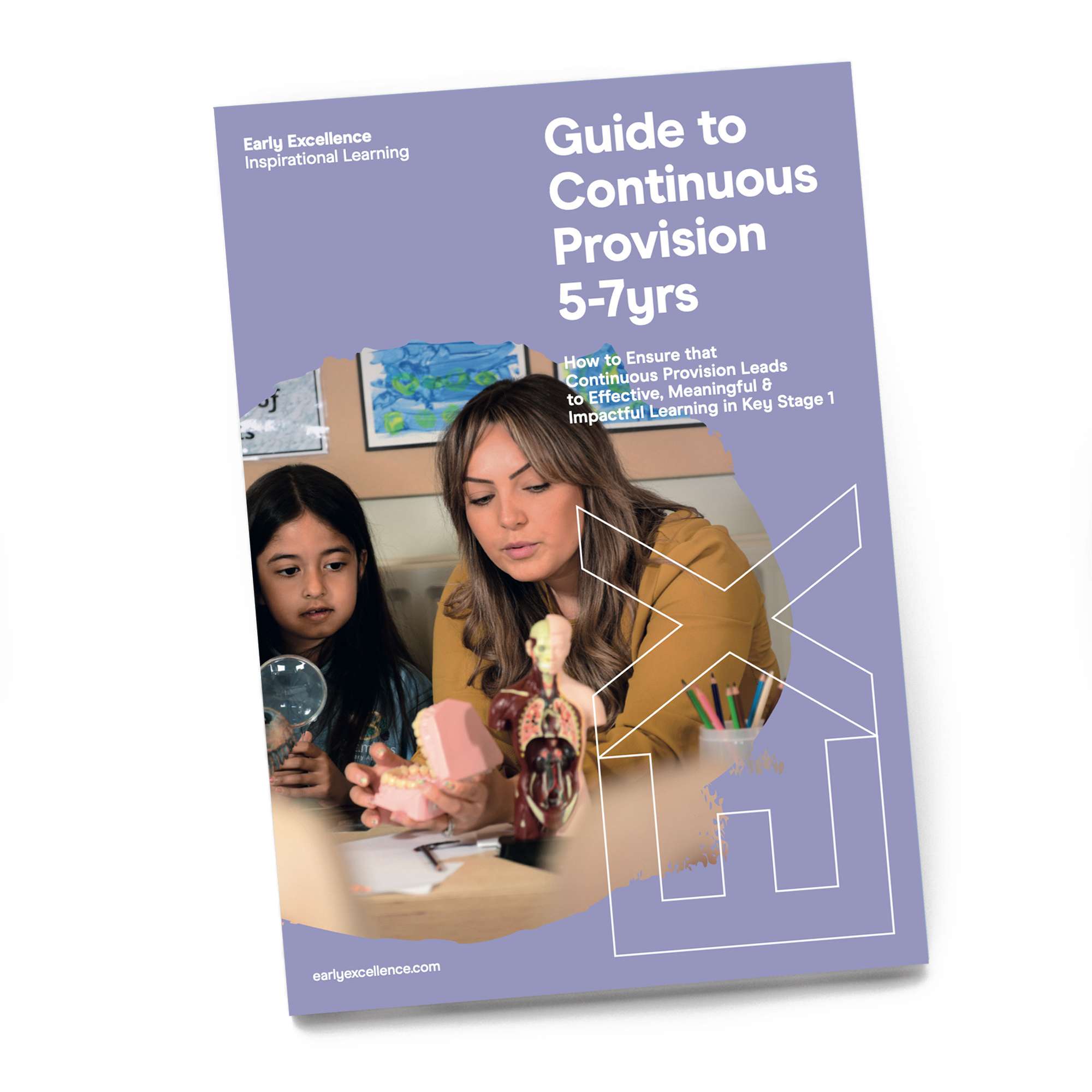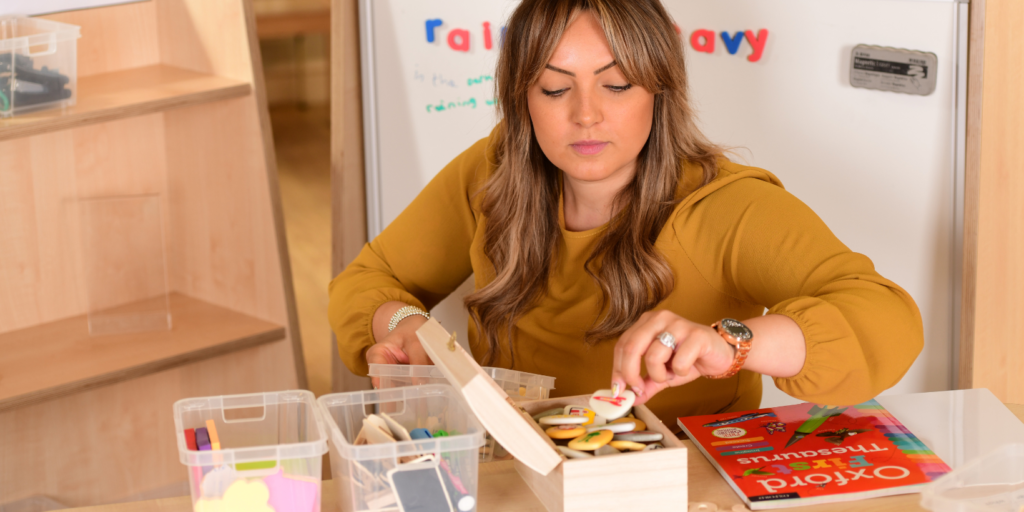As the new school year begins, most Key Stage One teachers (5-7 years) will be considering how to introduce continuous provision into their classrooms, perhaps for the very first time. The transition from the Early Years Foundation Stage (EYFS) to Key Stage One (KS1) can be challenging, and it’s essential to build an environment where children can explore, engage, and extend their learning in ways that suit their developmental stages.
At the outset, it’s quite easy to think that continuous provision in KS1 is an extension of Early Years and that it’s just something that can be done temporarily whilst children learn how KS1 differs to the EYFS. It’s easy to fall into the trap of undervaluing the very core practice of continuous provision if we do not truly understand it. At Early Excellence, we understand the complexities of this process and are committed to supporting teachers in developing meaningful, effective continuous provision in KS1.
Continuous Provision in KS1: Top Ten Tips for Getting Started
Here are our top ten tips to help you get started with introducing continuous provision in KS1:
1. Adopt a ‘Less is More’ Approach to Resourcing
When introducing continuous provision in KS1, as a general rule, less is more. Start with a small, carefully chosen selection of high-quality resources that are open-ended and encourage deep thinking. Ensure you are thoughtful with your resource selection – every resource should earn its place and should meet the needs of the curriculum. Otherwise, we risk filling our classrooms with resources that children are unable to use to consolidate their learning as they don’t marry with the curriculum. Time spent in the first few weeks getting your continuous provision right is really worth it and will pay dividends further down the line.
2. Prioritise Continuous Provision Over Enhancements
At the start of the year, focus on embedding your continuous provision rather than worrying about enhancements. Enhancements can be introduced later once children are confident in using the core areas of provision. Too many enhancements at the start of the year can muddy the water for children and often detract from the intent of your carefully planned provision. A strong foundation in continuous provision will allow children to approach enhancements with curiosity and creativity, using them alongside the continuous provision to deepen their learning.
3. Invest Time in Modelling
Children need time and support to understand how to use the resources available to them in your classrooms. Use your first few weeks wisely. Instead of trying to hit the ground running in week one with continuous provision plus maths, phonics, geography and so on, plan time in your timetable to model using the provision areas. Make this your core teaching priority. Consider demonstrating how materials can be used creatively and purposefully, model how to select resources for their purpose and how to tidy away each provision area as well. By showing children how to engage with the environment, you are setting them up for deeper, more meaningful learning experiences when they are learning independently and ultimately, you’re giving ownership of the environment to them.
4. Slow Down the Timetable
A rigid timetable can inhibit children’s ability to fully engage with their classroom environment. Give children time to explore their learning spaces and allow them to become familiar with the routines of your classroom. Slowing down the timetable also gives you more flexibility to teach in the environment, enhancing their learning through well-placed adult interaction and support – this is key to the success of your provision. There’s often a big rush in September to get into ‘teaching lessons’, but if we’re going to be successful in supporting our children to learn through provision in KS1, then we need to acknowledge the strength of provision for the teaching tool that it is. If we only see teaching as a ‘top-down on the carpet approach’, then we will never give provision the status it deserves and it will therefore never offer the possibilities for learning that it could for the children.
5. Plan for Relevant and Age-Appropriate Learning
Children in KS1 are still very young and therefore require an environment that reflects their developmental needs. Young children need opportunities to learn actively, through sensory experiences, with their peers, and through real-life opportunities. Consider their physical, social, and emotional development when planning your provision and teaching. Look closely at the Characteristics of Effective Teaching and Learning (part of the EYFS Statutory Framework paragraph 1.18) and consider using these to shape your practice and provision. Collaboration with the EYFS team is essential; ensure you gain a holistic view of each child, their end points from the EYFS and their dispositions to learning and adapt your provision and curriculum to suit the specific needs of your cohort.
6. Embed Simple Routines
Routine is key to helping children feel secure and independent within continuous provision. Spend time establishing simple, consistent routines that children can follow with confidence, such as how to access your provision areas, how to use particular tools in the workshop area, or perhaps how to tidy away or display their work in progress. Having structure will support children in making the most of their time in provision, it will increase expectations and lead to more focused and purposeful learning. Try and think of all routine moments as learning opportunities. Ask yourself, is there an opportunity for learning whilst children tidy away the blocks? Is there a daily opportunity in provision for practising writing the day of the week or an opportunity to tell the time? List all of the knowledge and skills that can routinely be learned over time and embed this into your daily routines where possible.
7. Get to Know Your Children
Investing time in getting to know each child individually is crucial. Children’s uniqueness, their interests, strengths, and challenges should shape your environment and inform how you interact with them. The more you understand the children in your class, the more you can tailor your provision to support their unique needs and encourage deeper learning. Again, ensure you’ve spoken to the child’s previous teacher, talk to their parents, really get to know them. Knowing your children will impact on their happiness and motivations and it will also mean you can really start to connect with each child.
8. Use the Environment to Support Teaching
When using continuous provision in Key Stage One, the environment itself is a teaching tool. Use it to provide learning opportunities that are linked to the curriculum so that children can practise, consolidate and deepen their knowledge. Allow children to explore concepts in a hands-on, self-directed way. For example, integrate maths or literacy skills into your provision areas, so children can practise these skills in meaningful contexts. For example, provide the expectation that children display their model with the date, their name and perhaps a title. Increase your expectations as you teach new skills. Of course, you will need to be present in the environment with the children in order to teach, develop and embed learning alongside the children. Get into the environment as much as you possibly can, ideally at the start of the year, you would want to be in there all day every day. Model, observe, teach, think out loud, offer suggestions, provide a model for thinking, suggest ideas and challenge children’s thinking. We have more ideas for setting up a new classroom as a blog and podcast.
9. Collaborate with Your EYFS Team
The transition to KS1 should be seamless for children. By working closely with your EYFS colleagues, you can maintain continuity in the learning environment both physically and emotionally. Discuss each child’s developmental journey to ensure that the provision in your classroom reflects their previous experiences and current needs. If you’re at a point in the year where things feel like they perhaps aren’t working, go back and meet with the EYFS team. This will help you to reflect upon and adapt your approach.
10. Reflect and Adapt Throughout the Year
Continuous provision is not a static approach. Reflect regularly on how the children are using the environment and enhance your provision as their needs and interests evolve. Continuous provision should grow with the KS1 children as they acquire new knowledge and learn new skills. Your environment should allow them to extend their learning in increasingly complex and engaging ways.
Key Questions for Reflecting on Continuous Provision in KS1:
- How well does my current environment reflect the developmental needs of my children?
- Have I planned enough time to model using the provision areas? If not, how will I ensure that this happens?
- How can I slow down my timetable to allow more time for meaningful learning in the continuous provision?
- What can I learn from my EYFS colleagues about each child’s learning journey so far and how can I use this to shape my practice?
By taking the time to embed continuous provision thoughtfully, you will create a dynamic and responsive learning environment where every child can thrive.

Have you started to introduce Continuous Provision into KS1? Are you thinking about it? Hear from inspirational KS1 teachers who share how they developed the approach and answer the question ‘But how…?’.

Deepen your knowledge around continuous provision in KS1 with our Rethinking the Learning Environment in Key Stage One course which focuses on developing your environment and pedagogy.

If you would like practical support with the planning of each area of provision in KS1, explore our Guide to Continuous Provision 5-7 years or download our KS1 Small World & Blocks Provision Guide as an example.

